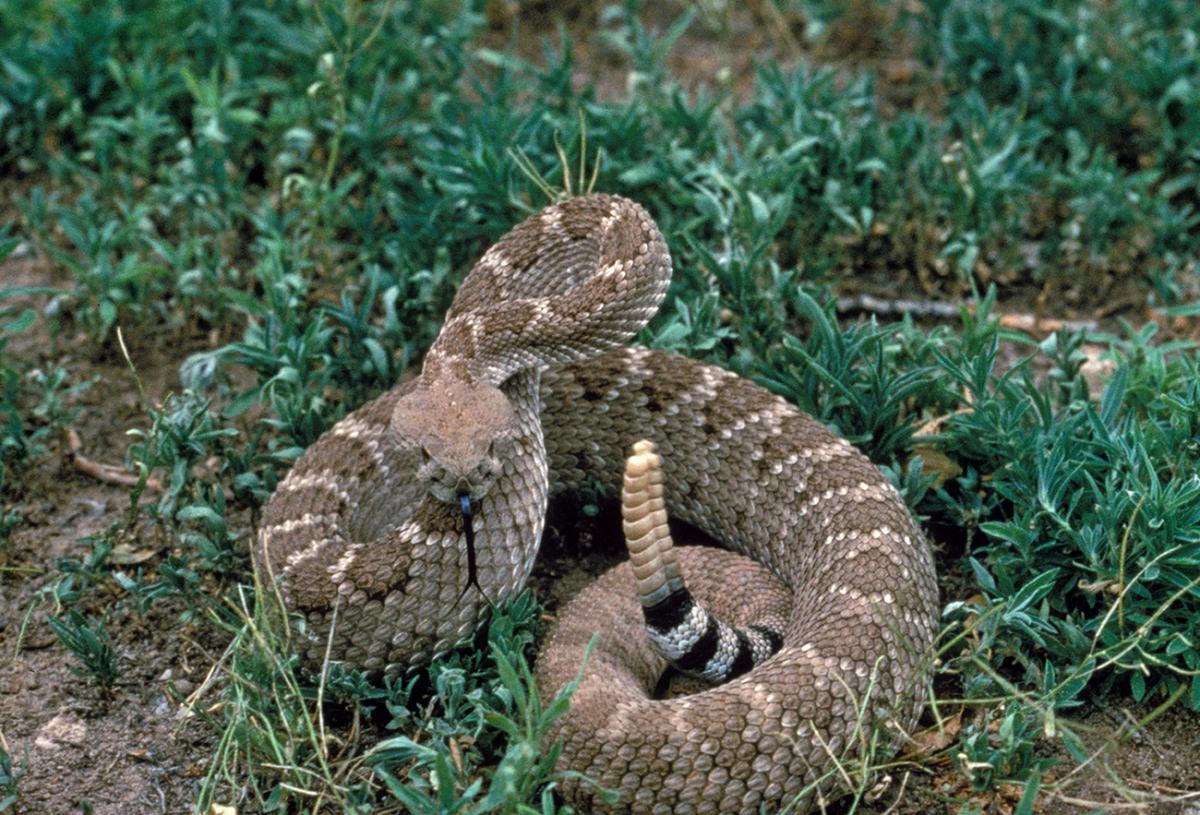D: Do you have any water, Yaël? I should have assumed I’d need more water than usual on a hike in the desert.
Y: Sure, I brought an extra bottle, Don.
D: I don’t know how the animals out here survive. There’s barely any rain, and I don’t see them collecting that rainwater in pots and pans.
Y: Not in pots and pans, but some of them do harvest rainwater.
D: How?
Y: The western diamondback rattlesnake’s method involves coming out of its den when it’s raining, flattening its body against the ground, and arranging itself into a tight coil to increase its surface area. Rain droplets coalesce on its back, and the snake then drinks the droplets.
D: How does the water stick? Rain droplets wouldn’t stick onto my body if I just out went and stood in the rain.
Y: Snakeskin is really different from human skin—and western diamondback rattlesnake scales are special, even when compared to other snakes. Scientists did an experiment where they dropped water onto the backs of three different snakes: the western diamondback rattlesnake, the desert kingsnake, and the Sonoran gopher snake. They saw that the water beaded up on and stuck to the scales of the rattlesnake, but formed shallow pools and rolled off the scales of the other two snakes. Using a scanning electron microscope, the scientists learned that the western diamondback rattlesnakes’ scales have nanochannels that form a labyrinth-like pattern, which makes it possible for the water droplets to stick the way they do.
D: Seems like it’s working for them, but I’m glad I don’t have to take a rainwater shower every time I want some water.









